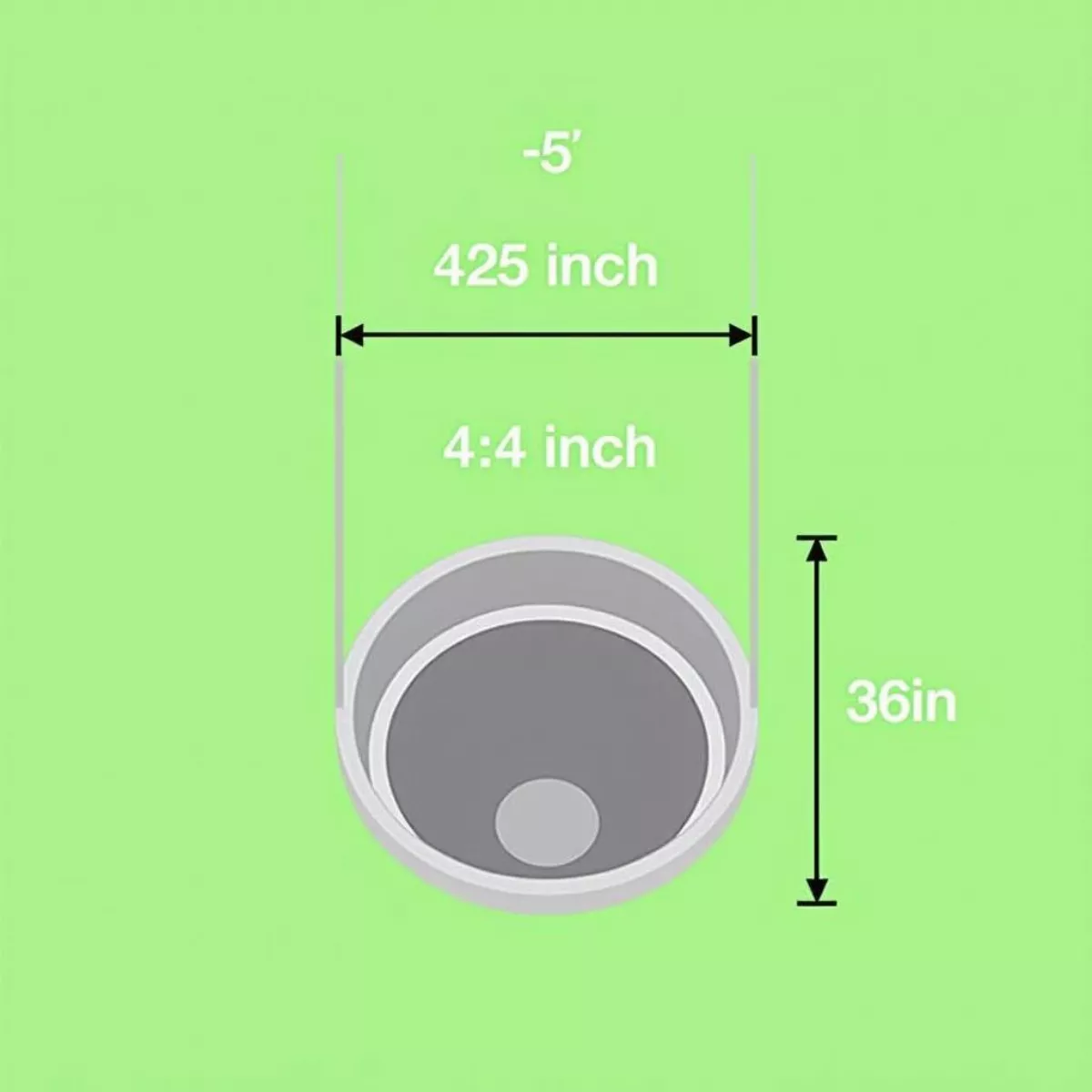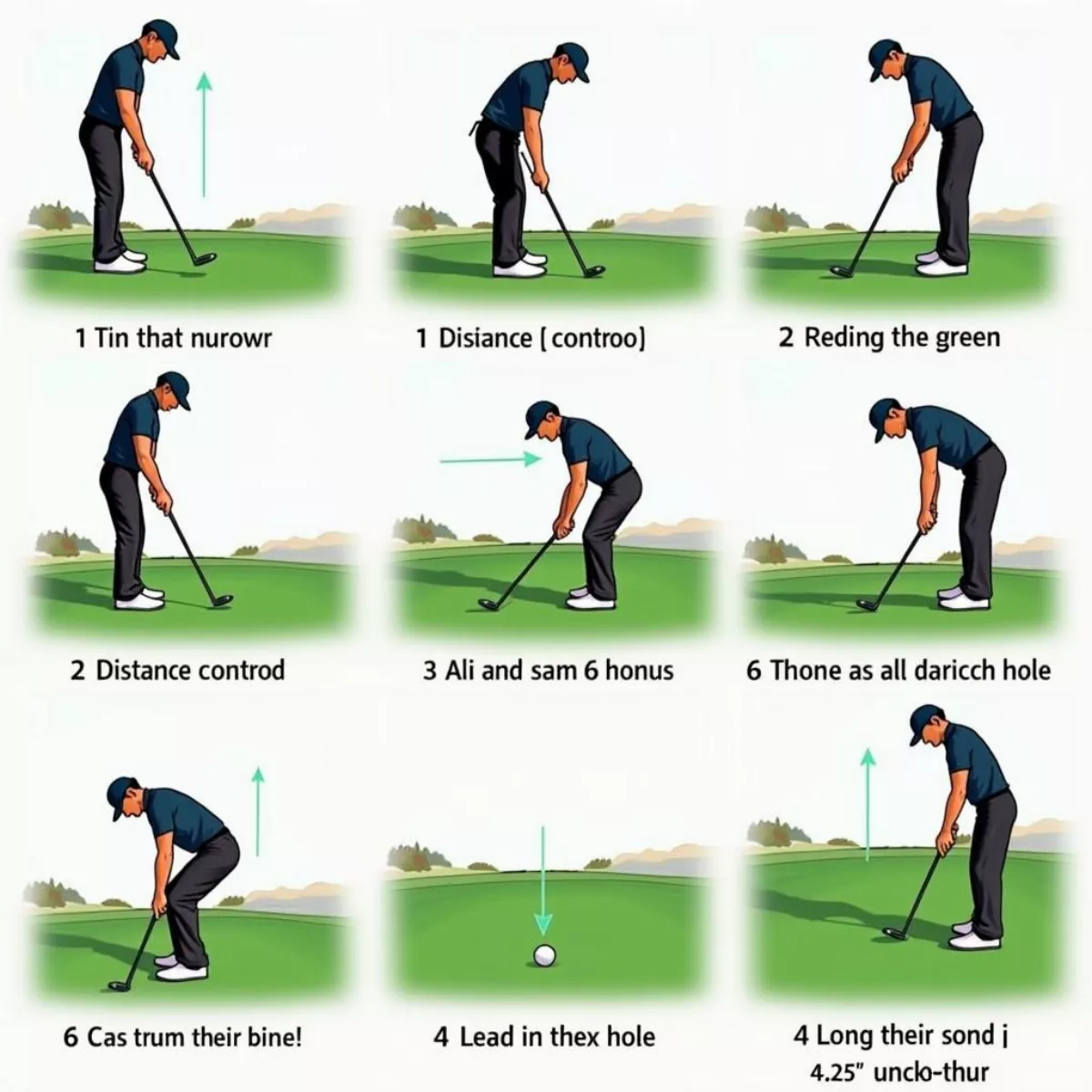When you first step onto a golf course, one of the most intriguing things you will encounter is the golf hole itself—specifically, its diameter. The diameter of a golf hole may seem like a minor detail, but it plays a crucial role in the game. This article discusses everything you need to know about the diameter of a golf hole, from its specifications to how it affects gameplay.
What is the Diameter of a Golf Hole?
The diameter of a regulation golf hole is 4.25 inches (10.8 centimeters). This has been standardized by the USGA (United States Golf Association) and is the same across all professional and amateur tournaments.
Why 4.25 Inches?
The choice of 4.25 inches comes from a blend of tradition and practicality. When golf began evolving in the 15th century, hole sizes varied. However, this specific measurement struck a balance between being challenging for golfers and relatively easy for the ball to enter. It has remained consistent since the 1929 USGA decision to standardize this measurement.
 Golf Hole Dimensions
Golf Hole Dimensions
Breaking Down the Importance of Hole Diameter
The size of the golf hole affects several aspects of the game:
1. Skill Development
- A smaller hole might challenge more skilled players.
- Beginners can feel encouraged as the standard hole size allows for easier achievements.
2. Game Strategy
- Players often plan their shots considering the distance and angle to the hole.
- A better understanding of the diameter can aid in the mental aspect of the game, leading to better performance.
3. Putting Dynamics
- The hole’s size can affect the physics of the game. Advanced players factor in the diameter of the hole when putting for better accuracy and confidence.
 Golfer Putting on Green
Golfer Putting on Green
Trivia: Historical Hole Sizes
- In the 19th century, some holes were as large as 7 inches in diameter!
- Traditionalists in the early days of golf, especially in Scotland, initially ignored the importance of hole sizes altogether.
Additional Golf Hole Specifications
- Depth: The hole should be 4 inches deep to accommodate the ball.
- Positioning: Golf holes are often placed within specific distances from the green’s edge to moderate the challenge.
Diagram of a Golf Hole
+-------------------+
| O |
| --- |
| | | |
| --- |
+-------------------+This simplistic diagram represents a golf hole’s circular entry (the ‘O’) and the surrounding green circuit. The size and accessibility of the hole play a pivotal role in game strategy.
How to Practice with the Standard Golf Hole Size
Understanding the 4.25-inch diameter is crucial for practice sessions. Here’s how you can incorporate it into your game:
- Set Up Training Drills: Focus on putting drills that normalize aiming for the center of the hole.
- Use Practice Greens: Familiarize yourself with how different green conditions influence putting accuracy.
- Incorporate Psychology: Mental training strategies can help build confidence in making shots towards the hole.
 Golf Putting Practice
Golf Putting Practice
Key Takeaways
To summarize:
- The official diameter of a golf hole is 4.25 inches.
- Understanding this measurement affects gameplay, strategy, and practice.
- Historical context shows how the game has evolved regarding hole sizes.
FAQ Section
1. Why is the diameter of a golf hole standardized?
Standardization provides a consistent challenge for all players, creating a level playing field across courses.
2. What is the depth of a golf hole?
A golf hole should be 4 inches deep to accommodate a golf ball effectively.
3. Can the hole size be different for recreational play?
While some casual courses may have slightly larger holes for fun, official tournaments abide by USGA regulations.
4. How does hole size influence putting technique?
Golfers use various strategies based on the hole’s diameter to improve accuracy and make informed decisions during their game.
5. Are there any golf courses with larger holes?
Some recreational or fun-focused courses might feature larger holes to create a more relaxed atmosphere.
6. What historical factors influenced the choice of a 4.25-inch hole diameter?
Tradition, ease of play, and challenge balance contributed to the 4.25-inch decision made by the USGA in 1929.
7. How can I practice for better putting accuracy?
Utilize drills focusing on the center of the hole, and consider varying distances to enhance your skills.
8. Has the diameter of the hole ever been disputed?
Over the years, there have been discussions around hole sizes, but the 4.25-inch standard has remained unchallenged in official gameplay.
9. Is there a difference between amateur and professional hole sizes?
No, both amateur and professional games use the same hole diameter of 4.25 inches.
10. Do different types of golf courses have different hole sizes?
While most follow the USGA guidelines, some novelty courses may feature larger holes for entertainment purposes.
Conclusion
Understanding the diameter of a golf hole is more than a trivia question—it’s a vital detail that can influence gameplay and strategy. With a standardized 4.25 inches, this dimension offers a consistent challenge across the beautiful golf courses worldwide. As you practice and play, keeping this measurement in mind might just give you that edge you need to sink more putts and lower your score. Embrace this knowledge and let it enhance your golfing experience!
Happy golfing!